It is the only place in Canada where you can drive to the Arctic Ocean.
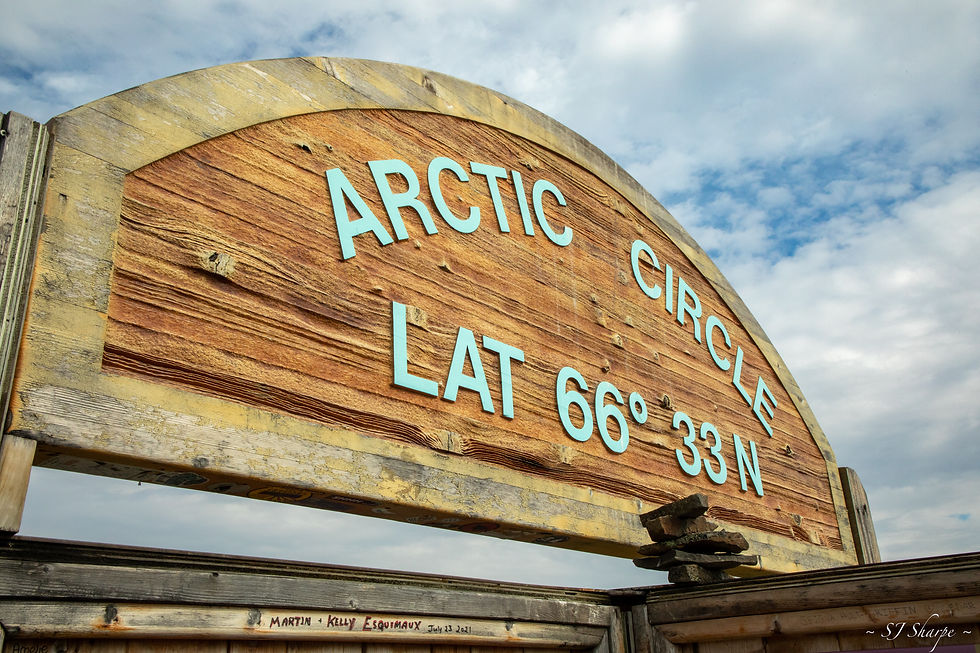
After linking up with Katrina and Will in Dawson City, Yukon, we left the trailer behind and began our truck tenting adventure up the Dempster Highway to Inuvik and on to Tuktoyaktuk. Although there is some pavement immediately after km 0 and also in the town of Inuvik, it would be a1,750 km return trip on a gravel highway. It is the only place in Canada where you can drive to the Arctic Ocean.
It would be a1,750 km return trip on a gravel highway
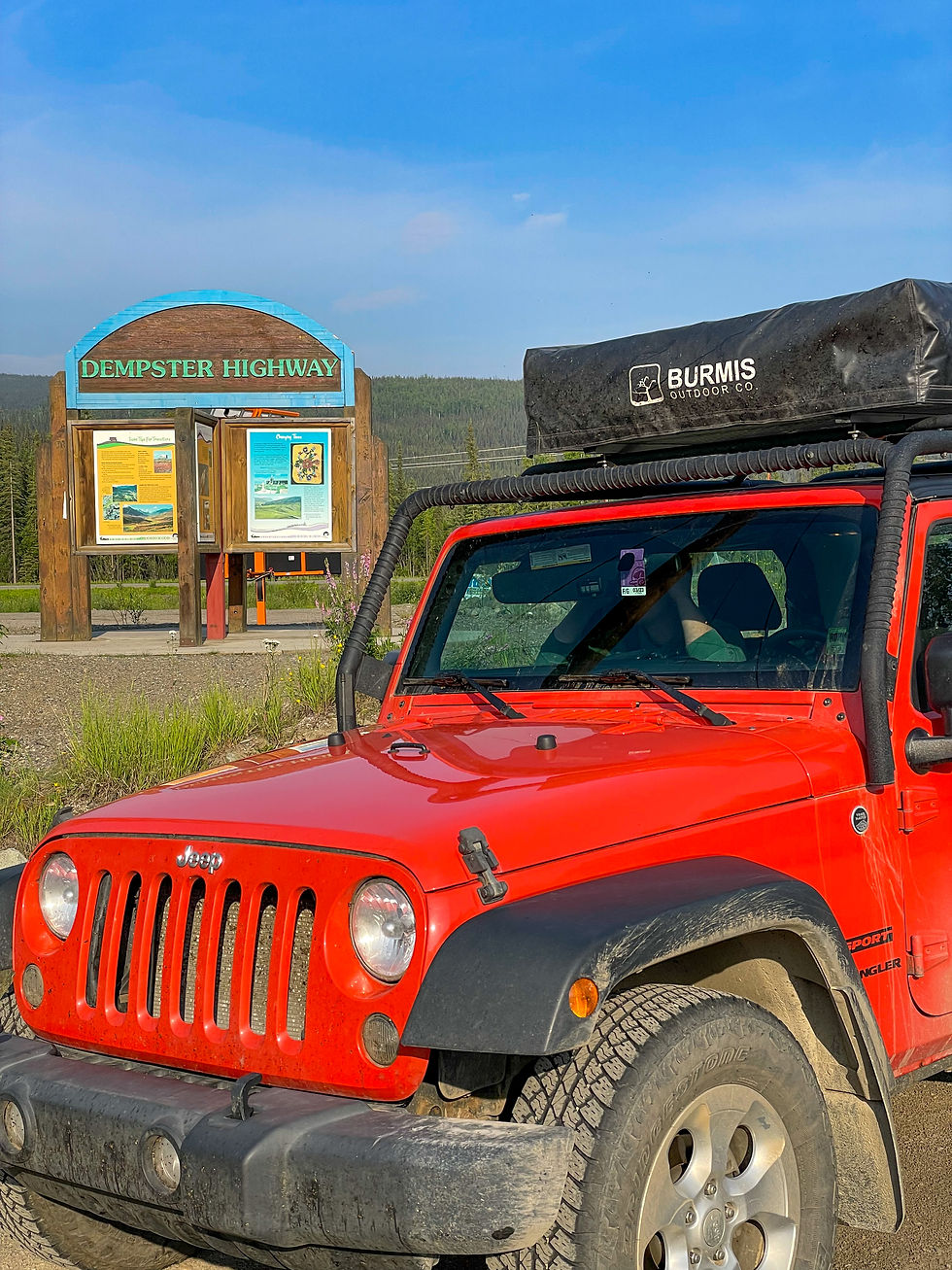
It was an absolutely fantastic trip. The weather was good, the road was dry and dusty, but it was well maintained. We were told that the road gets worse if it rains, but we were lucky in that regard. Both our vehicles had good new tires and we carried full size spares, plus a tire repair kit and air compressor. I was carrying extra cans of diesel for my truck and gas for Katrina’s Jeep. This was not required as fuel is available at good intervals along the way and we were never at risk of running low on fuel. Dempster Junction (Km 0), Eagle Plains and Tuktoyaktuk were our fuelling points along the way. Katrina's Jeep, with the smaller tank, also needed refuelling in Inuvik.
A full size spare is a must
We had no issues, breakdowns or flats, but we did encounter travellers who were not properly prepared and had suffered the consequences. We saw people stranded when, after getting a flat tire, they had put on a tiny economy spare which also quickly became flat. Good tires and a full size spare is a must. An economy spare is not a spare tire. Some travellers take two full-size spares.
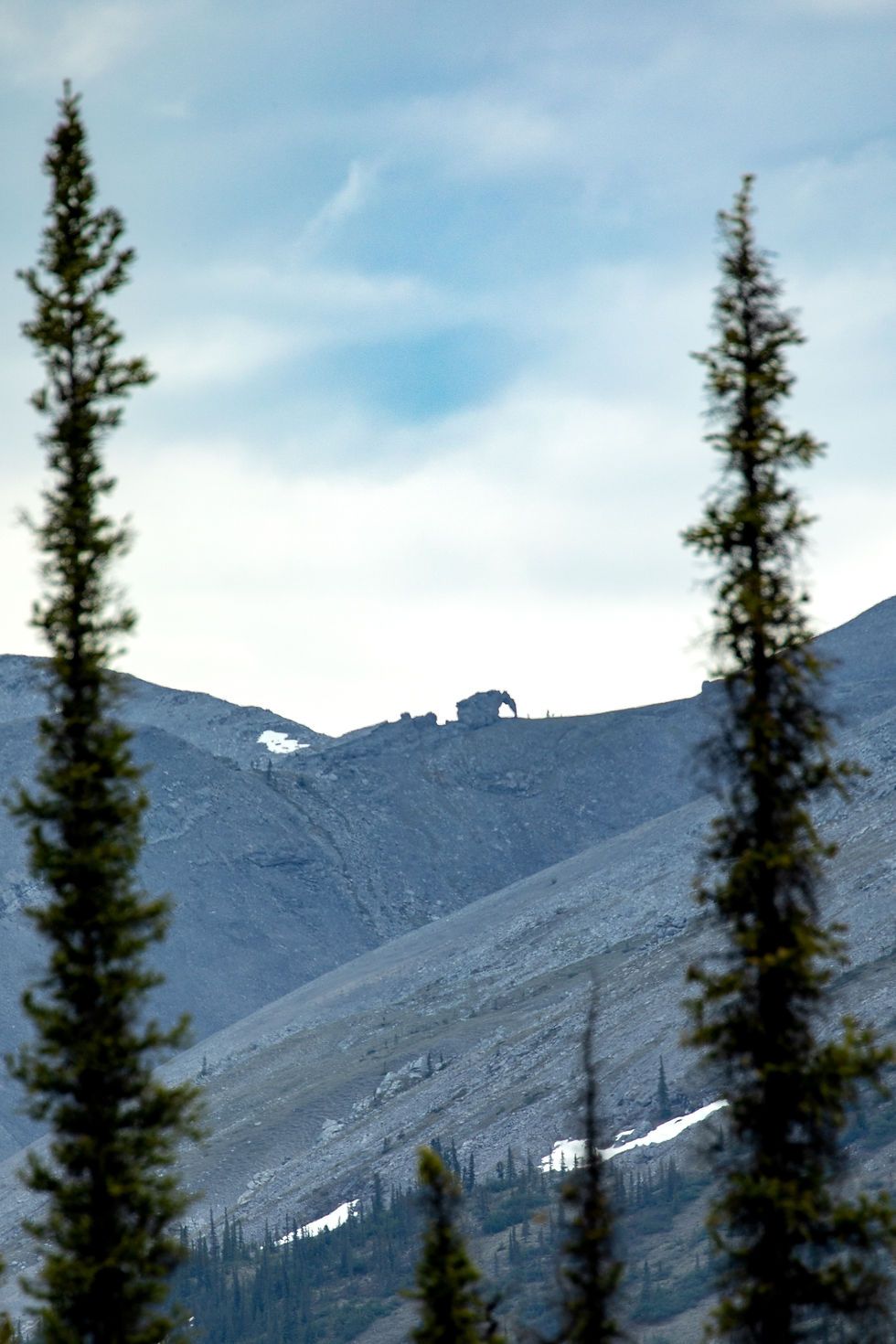
Day One. Leaving Dawson City, we travelled 40 km back along the Klondike Highway to Dempster Junction, km 0 of the Dempster Highway. After topping up the fuel tanks we started our journey northward across the bridge over the Klondike river. Not long after that the pavement soon ended and that would be the last pavement for 720 km until we reached the outskirts of Inuvik, NWT.
We stopped in Tombstone Territorial Park for a quick hike up Goldensides Mountain, then pushed on. It turned out that this was a good decision, because on the way back the smoke and haze from wildfires in Alaska limited the visibility in Tombstone.
Driving conditions were good and traffic was light. One section of the road had been recently watered down by the water truck so we did pick up a bit of mud. Stopping at Elephant Rock for photos, Eagle Plains for fuel, an absolutely mandatory stop at the Arctic Circle, we eventually reached our campsite at Rock River. Rock River is a small pleasant Territorial Campground but was also one of the most buggy places we have encountered so far on this trip. I was so happy that we decided to bring the the screen room gazebo so we were able to eat, drink and socialize without being swarmed by mosquitos.
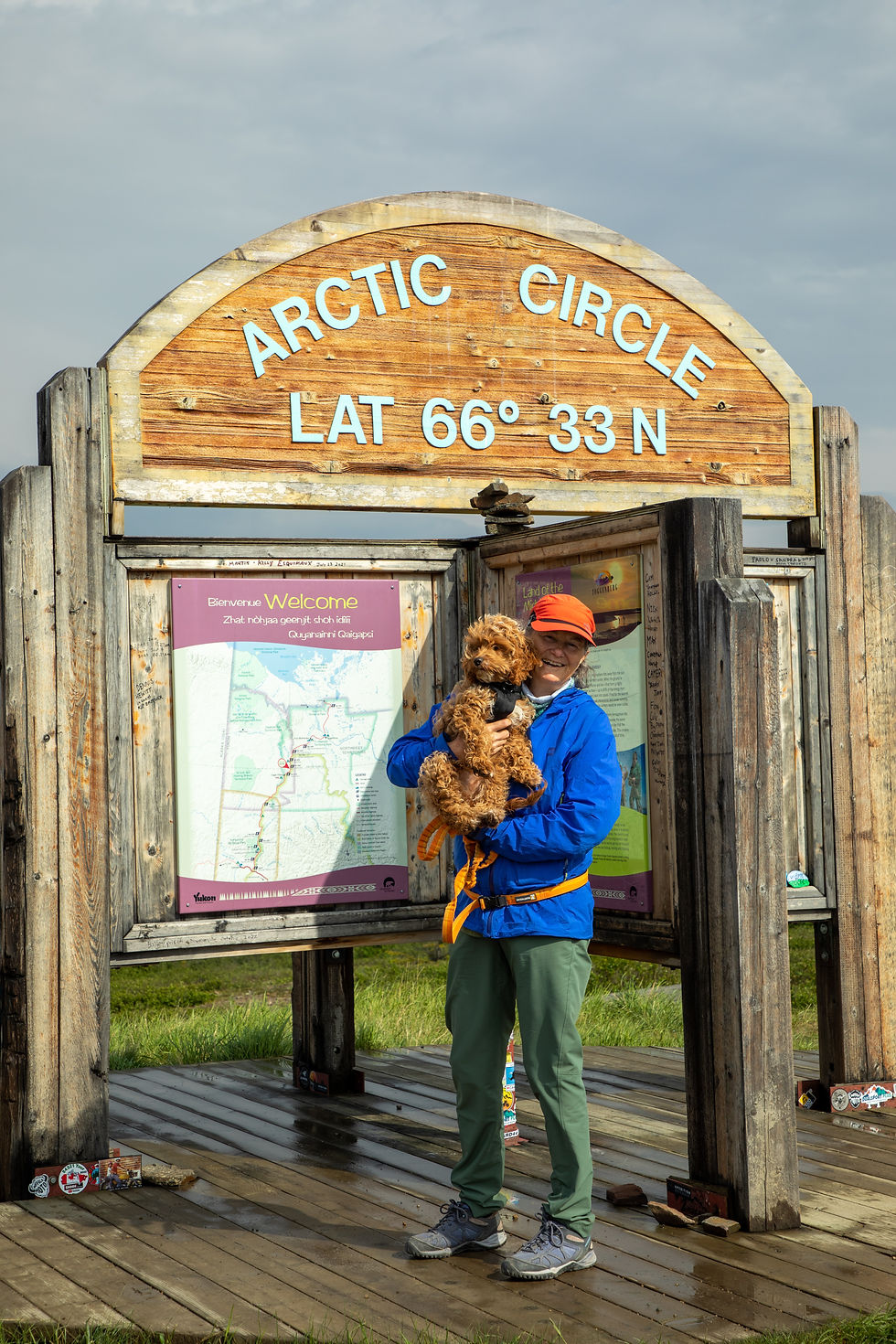
Day Two. We had an early start; breaking camp in a light drizzle and with mosquitos out for blood we quickly got on the road. Very early in the day we reached the Yukon-NWT boundary with its sweeping majestic views. After setting our clocks back an hour we continued on into the NWT. Next came two ferry crossings: Peel River near Ft McPherson and later the MacKenzie River. On the outskirts of Inuvik the road turned to pavement. We stopped in at the Visitors Centre at Inuvik - this is a great resource and is a highly recommended stop. Katrina refuelled her Jeep in Inuvik and we pushed on to Tuktoyaktuk. Technically the Dempster ends at Inuvik. The next 140 km of gravel highway which opened in 2017 is called the Inuvik-Tuktoyaktuk Highway, but many just refer to them both as the “Dempster”.
We heard that this section of road was roughest stretch of the Dempster, but we found it to be in good condition. Midway between Tuk and Inuvik there was a stretch of road where the gravel got deep and softer which required lower speeds. Again, conditions were good and dry so we had no problems.
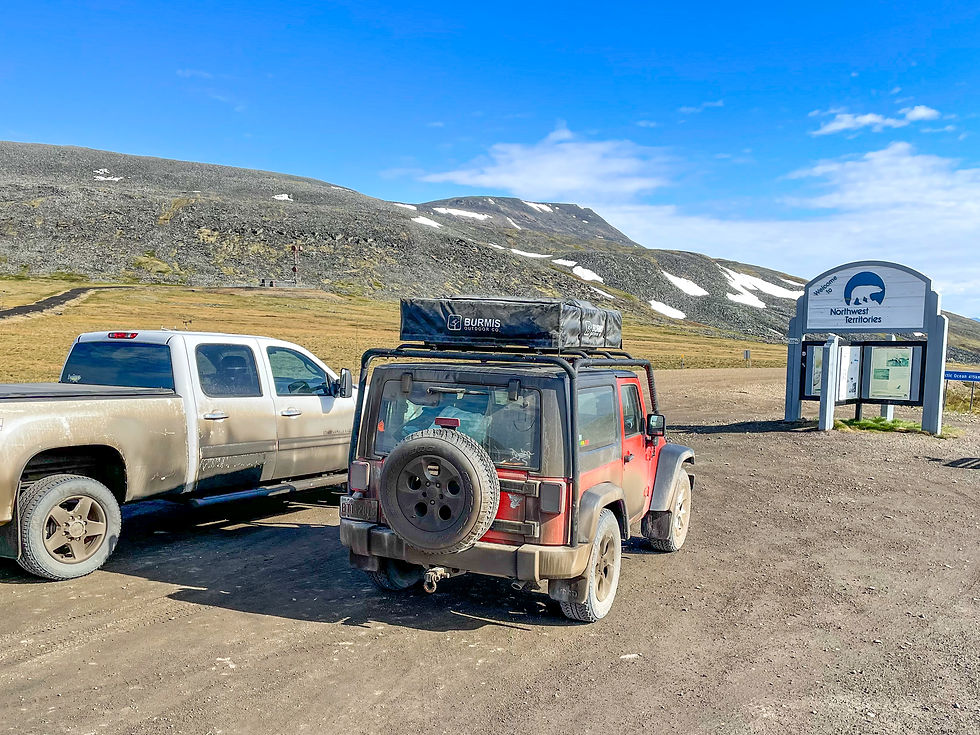
Camping right on the edge of the Arctic Ocean was amazing.
Arriving in Tuktoyaktuk we followed the road all the way to its end on the Arctic Ocean. This was to be our camping spot for the night. Camping right on the edge of the Arctic Ocean was amazing.

Day 3. The following day we had a fantastic visit in Tuktoyaktuk but we will save that for a separate post. Later in the afternoon, after refuelling, we headed south to Inuvik were we stayed at the Jak Territorial Campground. It was a bit buggy but we were happy that it had showers.
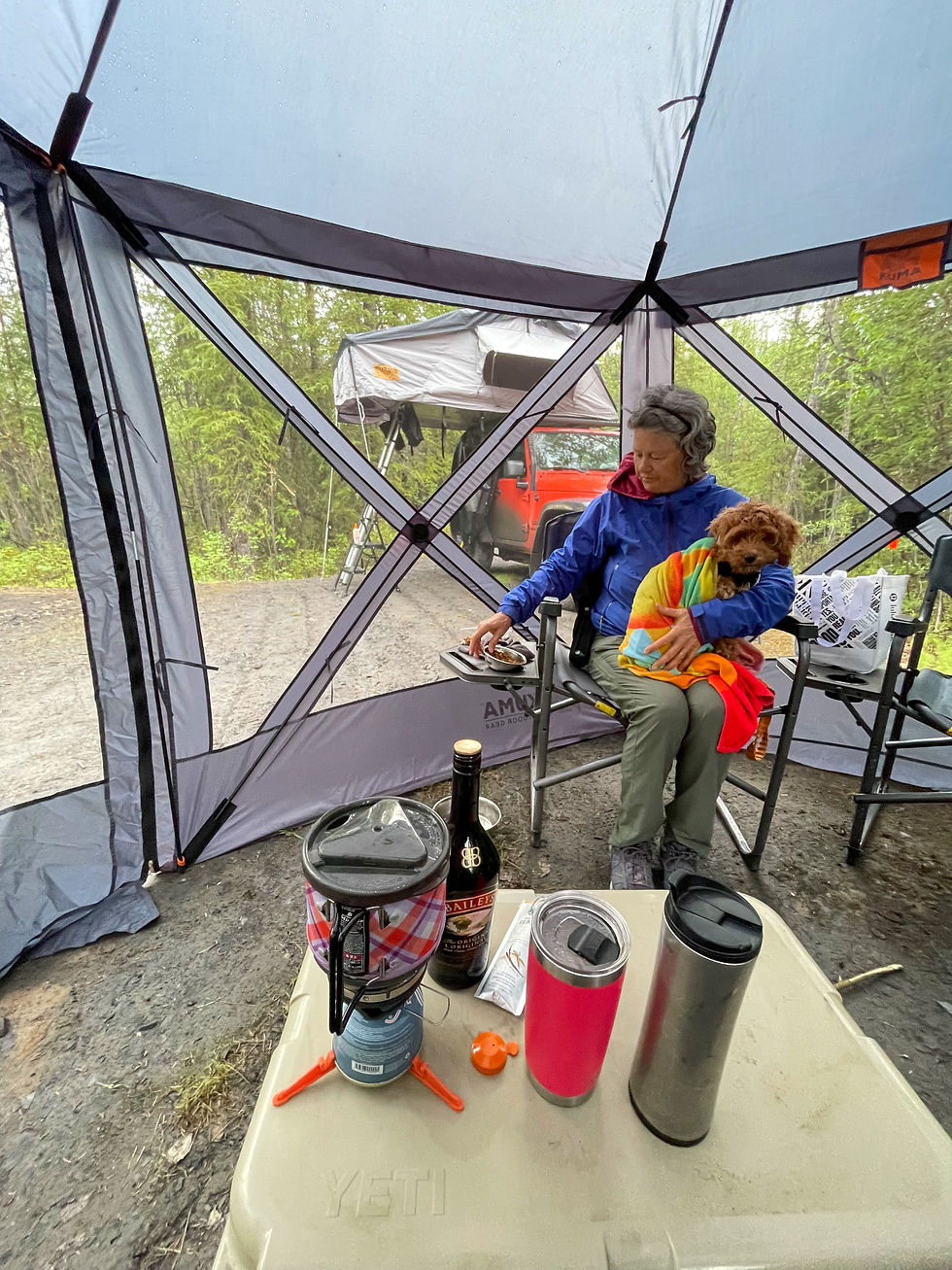
Day 4. The following morning we went back into town to stock up on supplies at the NorthMart, Katrina filled up her Jeep and we headed south for Eagle Plains. We got separated at the first ferry, but caught up with each other later in the day at the NWT-Yukon boundary. We camped at the Eagle Plains campground - a pretty basic set up, not very private, but again we had access to showers.
Day 5. The last day we pushed on back to Dawson City. The views were limited due to haze from fires burning both in Alaska and the Yukon and the road was extremely dusty.
All in all it was a fantastic trip. The views, and the dramatic changes in topography were amazing and just reinforced what a beautiful land we live in. The locals we met were friendly, kind and generous. Other travellers, like-minded individuals from all over the world, were friendly and respectful. Ruby, at just under five months, continued to handle travelling like a champ and easily adapted to sleeping in a tent.
We had hoped to see more wildlife but had to settle for a moose, some swans and some other birds. The vehicles held up great but both did come back with a couple of nasty rock chips on the windshield caused by rocks thrown up by heavy trucks. Fuel costs were not much higher than Dawson City and the diesel price in Tuktoyaktuk, at $2/litre, was the lowest price I’ve paid since leaving Alberta. Five days was quick and doable but left very little time for Tombstone. Fortunately we had already spent a week camping in Tombstone so this wasn't an issue. Tombstone is a beautiful park and deserves some dedicated time for exploration.
We are happy that we can now say that we have driven Canada, from coast to coast to coast.
We highly recommend this trip. It is a long way from the southern provinces, but it is an amazing part of our country and well worth the time and effort. We are happy that we can now say that we have driven Canada, from coast to coast to coast.


































Comments